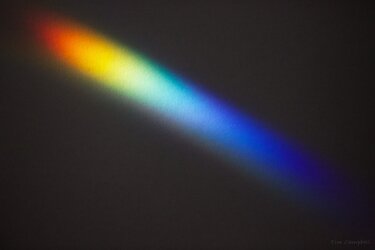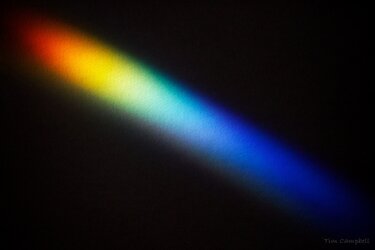- Joined
- Dec 9, 2006
- Messages
- 21,442
- Reaction score
- 12,413
- Location
- Maryland
- Can others edit my Photos
- Photos OK to edit
Anybody else been able to get white down to black???
I've turned white snow grey by following the meter. Does that count?
Follow along with the video below to see how to install our site as a web app on your home screen.

Note: This feature currently requires accessing the site using the built-in Safari browser.
Anybody else been able to get white down to black???
Anybody else been able to get white down to black???
Here's the key thing about artificial light: It doesn't create lightness, it creates darkness.
To be sure, you can just use it to light stuff up so it's not dark any more, or to permit a usable shutter speed, and that's the original use. There's nothing wrong with that
The important uses are all putting light on one thing, pushing the exposure up, so that another thing appears dark. You're creating shadows. You're losing the background in darkness. By lighting the model up enough, and not lighting the white seamless background, the background goes black. Or grey, if you light it a little. By creating shadows on the model's face you make her look fat, or thin, or terrifying.
Go make some darkness!
I'd like to see some examples of white seamless paper rendered as black through the application of massive amounts of light on a human subject. I do not happen to have ANY such pictures and I do not think I can think of one that I have ever seen where that actually happened. And I only have 2 x2400 W-s, 1x1600 W-S, 1x800W-s,1x600 W-S, and 3 x 400w-s, and 500 W-S in ancillary small packs...and have occasionally used the two 2400's and the 1600 all at once...on the same set...and yet, I cannot recall EVER having been able to push white down to BLACK.
Anybody else been able to get white down to black???
I think I'm gonna wrap up my contributions here too. I'm going to close with a restatement of the idea, though, so we don't end on a note of 'wait, what IS artificial light?' and 'can white seamless truly be rendered black, or merely dark grey?'
The idea I want to express is simple and non-controversial. Without hyperbole, it is this:
When you add light to a scene you are photographing, in the final image some parts will become lighter, and other parts will become darker. You may find it useful to consider thoughtfully what parts are getting darker as much or more than what parts are getting lighter.
When you add light to a scene you are photographing, in the final image some parts will become lighter, and other parts will become darker. You may find it useful to consider thoughtfully what parts are getting darker as much or more than what parts are getting lighter.
Adding light makes things darker?
mind = blown
Adding light makes things darker?
mind = blown
Adding light to some parts of a composition CAN make other parts (non-lit) darker. Have you never used flash?
Adding light makes things darker?
mind = blown
Adding light to some parts of a composition CAN make other parts (non-lit) darker. Have you never used flash?
I've used the little one that pops up on my camera when taking photos of myself in the mirror.*
*sarcasm
There's actually two ways darkness gets made:
The light we apply casts shadows, and those matter. In many cases more than the light itself, in that what we care about is the shadow more than the highlight.
The light we apply also lifts the brightness of the objects we apply it to, making everything else relatively darker, which can be used (or which can bite you) in a variety of ways.
Here's the key thing about artificial light: It doesn't create lightness, it creates darkness.
To be sure, you can just use it to light stuff up so it's not dark any more, or to permit a usable shutter speed, and that's the original use. There's nothing wrong with that
The important uses are all putting light on one thing, pushing the exposure up, so that another thing appears dark. You're creating shadows. You're losing the background in darkness. By lighting the model up enough, and not lighting the white seamless background, the background goes black. Or grey, if you light it a little. By creating shadows on the model's face you make her look fat, or thin, or terrifying.
Go make some darkness!
I'd like to see some examples of white seamless paper rendered as black through the application of massive amounts of light on a human subject. I do not happen to have ANY such pictures and I do not think I can think of one that I have ever seen where that actually happened. And I only have 2 x2400 W-s, 1x1600 W-S, 1x800W-s,1x600 W-S, and 3 x 400w-s, and 500 W-S in ancillary small packs...and have occasionally used the two 2400's and the 1600 all at once...on the same set...and yet, I cannot recall EVER having been able to push white down to BLACK.
Anybody else been able to get white down to black???

